#Junpei Tatenaka
Explore tagged Tumblr posts
Text
Today’s translation #868
Animage 2017/2, Tatenaka Junpei x Abiko Eiji interview (Figure Skating animation)
Part 7.
-- By the way, the reference live-action footage that you've mentioned is the footage of Miyamoto Kenji skating the choreography, correct?
Tatenaka: Yes. I went to the rink, when that footage was being recorded, and drew some sketches directly there, on the rink.
Abiko: They recorded it in the middle of the night, so I couldn't make it.
-- What did you think about Miyamoto-san performance, when you were watching it live?
Tatenaka: It was awesome. Absolutely beautiful. While sketching, I was really so happy to be there. Miyamoto-san's skating is really a series of beautiful poses and while animating them, it wasn't necessary to exaggerate anything at all. Drawing in tune with the music was a part of our job, and in the choreography, all the places, where you had this accents in the rhythm of the music, were nicely marked with a specific pose. So we didn't really had to do anything, just follow Miyamoto-san's movements and the animation in a natural way synchronized with the music. I was really in awe.
-- During Onsen on ICE in episode 3., in the scenes showing Yuuri and Yurio's performances, Yuuri was drawn more realistically, while Yurio's movements were more deformed - my impression was that this difference in how each character was drawn was introduced on purpose, but was it?
Abiko: More than on purpose, the reason for that was that each character was drawn by a different person (laugh). I drew Yuuri.
Tatenaka: And I drew Yurio.
Abiko: I think that the difference in our styles of animating is what gives people this different impression of each character.
21 notes
·
View notes
Photo

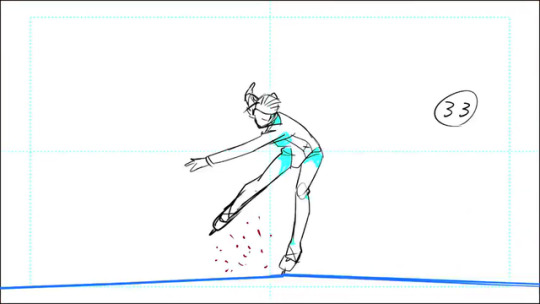
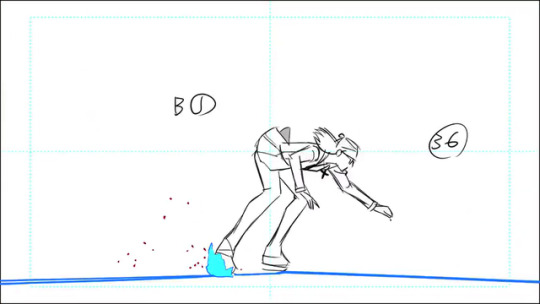

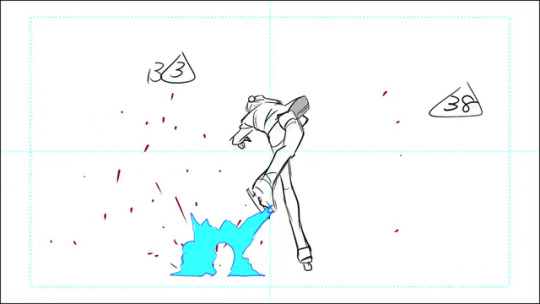



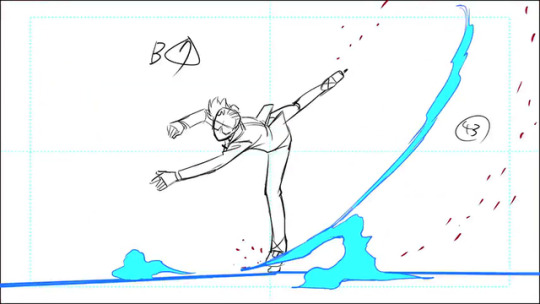

MAPPA’s Yuri!! On Ice, key animation by Junpei Tatenaka
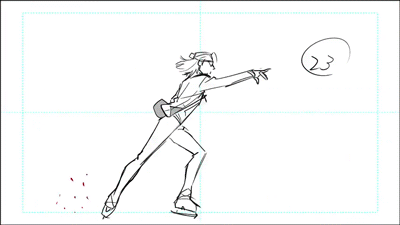
#yuri on ice#junpei tatenaka#yuri plisetsky#welcome to the madness#tv#anime#2d animation#character animation#rough animation#ruf animation#ruf#skate#spin#twirl#dance
11K notes
·
View notes
Photo

A Happy Birthday wish from Junpei Tatenaka, one of the key animators of Yuri!!! on Ice~ (x)
#junpei tatenaka#yuri on ice#yuri!!! on ice#yuuri on ice#yuuri!!! on ice#yoi#yurio#yuri plisetsky#birthday#happy birthday#animator#illustrator#russian#yankee#chibi#cute
529 notes
·
View notes
Text
Yuri on Ice BD booklet translation (with Eiji Abiko & Junpei Tatenaka interview) - Volume 3
Had a busy weekend, but finally here is the full translation of the BD/DVD vol.3 booklet. The format is the same as usual. I wonder if Yuuri was ever able to enjoy a banquet (and remember it), lol.
EDIT: I changed the translation of the street food eaten by Guang-Hong in episode 6 after being notified that it’s actually the Chinese “jianbing”, which is a kind of crepe, and not “rice cracker” which is what “senbei” means in Japanese. Thank you very much @dragonaeve for the input!! In Japanese it’s written 煎餅, with the same exact kanji of "senbei” (rice cracker), and though in the anime it totally didn’t look like a senbei to me I failed to notice that it was a false friend... (And to think I even researched all the other Chinese food listed in the topics section to be sure..)
The booklet has 3 parts: 1) Character introduction for Minami-kun, Georgi and Leo. 2) “Topics”, in other words random curiosities. It includes an explanation of how Japanese qualification matches work. 3) Interview with the figure skating animators Eiji Abiko and Junpei Tatenaka. Some of the things they say might be a little difficult to understand if you don’t know a lot about how animation works, but if you google “inbetween animations” you will find more detailed information. The parts in round brackets are exactly like they are in the original text, it’s not something I added.
Translations of the audio commentary and choreography parts coming in the next few days… (As usual I still haven’t even been able to put the BD in the player despite having it since the 23rd, sigh)
***If you wish to share this translation please do it by reblogging or posting a link to it***
***Re-translating into other languages is ok but please mention that this post is the source***
The future protagonist of Japan’s figure skating world!
Kenjirou Minami voiced by Ayumu Murase
Profile Date of birth: August 18th, 17 years old Height: 155 cm Blood type: O From Hakata, Fukuoka prefecture
Introduction Last season, all eyes were on him when in the Japan National Championships, in which he participated from the junior section, he became the center of attention and obtained the bronze medal at the young age of 16. This season, which marks his senior debut, he first succeeded in a quadruple jump at the Chu-Shikoku-Kyushu Regional Tournament. Despite his small build, he brightens the hearts of the audience with his energetic skating and exhuberant dancing. The success rate of his quadruple jump and triple axel is still low, but he is the most promising young athlete that might become the future Japanese ace. He admires Yuuri Katsuki, who is from Kyushu like him, and for this reason he chose “Lohengrin” as his short program in the current season. His parents are doctors and his older brother is also a medical student. The late-blooming veteran becomes a witch.
Georgi Popovich voiced by Wataru Hatano
Profile Date of birth: December 26th, 27 years old Height: 178 cm Blood type: private Russian
He is a veteran who can perform high jumps worthy of one of Yakov’s students, but always tended to be overshadowed by fellow student Nikiforov. In this season where Nikiforov is absent he chose 2 programs based on the theme of “heartbreak” to fight to become Russia’s top athlete. With his peculiar artistic sense, in the short program he plays an evil witch that puts a curse on the princess, and in the free the prince that will save her. As also stated by Yakov, he practices hard and strictly follows his coach’s advices. He always entertains fans with his feminine costumes and in Japan is popularly called “pigeon”. Because music was always with me.
Leo de la Iglesia voiced by Shunichi Toki
Profile Date of birth: August 2nd, 19 years old Height: 167 cm Blood type: O American
Introduction A skater that knows how to show his charm and always performs programs brimming with originality, choreographed by himself. He doesn’t jump quadruples, but his Program Components are highly praised because of his performances that give importance to the music. This season he tried his hand at hip-hop in the short program and won the American tournament of the Grand Prix series, held in his country. He is riding on the wave. In his everyday life he is a cheerful American of Mexican origin and is very sociable. He has many friends among fellow figure skaters and his fans are always looking forward to the private shots he uploads on the SNS. He respects Nikiforov, who also choreographs his own programs. YURI!!!’s TOPIC
TOPIC 1: Greed to SNS** (Thirst for the SNS) There are many skaters who share information with fans all over the world via the internet. Now that SNS are popular, skaters will upload a variety of contents, from their practice footage to their daily meals and private pictures of their holidays, some even being as open as to post romantic shots with their lovers. Fans can’t take their eyes off the social networks. In this regard, one of the hottest accounts is Thailand’s Phichit Chulanont’s. From pictures of his fainted teacher to candid shots of other skaters, he uploads any “juicy moment” he witnesses, in a way being the terror of the ones close to him. However, fans absolutely don’t want him to change his habits. [**translator’s note: “Greed to SNS” is what is actually written in English in the booklet, the part in round brackets is a more exact translation of what the Japanese says. All titles of the topics are in both Japanese & English and I’m usually leaving the original English as it is unless it’s weird.]
*Yuuri’s “Hanarezu ni Soba ni Ite” was also spread to the world *The results of matches and other news are always at hand *Maybe Anya’s gaze was already turned to someone else here…? (Phichit’s collection) *Regular updates about his state *He will never miss the chance to get a good shot *Sometimes it’s important to have the courage to upload!
TOPIC 2: Personal Best Score In figure skating, which is a technical sport, an athlete’s highest score up to the present is called “personal best” and the highest score of the season “season best”. Not only his ranking, but whether he managed to surpass his personal best is very important for a skater’s motivation. The season best is also important, because some big tournaments like the World Championships have a required minimum score to participate. ISU (International Skating Union) openly displays all skaters’ personal bests, but only the results obtained in competitions officially recognized by ISU are a target, therefore even if a skater achieves good results in the Japan National Championships or the Chu-Shikoku-Kyushu Regional Tournament, unfortunately they will not be recognized.
*The score display for regional tournaments is simple *The electric scoreboard of the GP’s China tournament (showing the PB mark too) *The TV live broadcast shows the PB mark too
TOPIC 3: National Competitions For Japanese skaters to be able to represent the nation in the World Championships or the Olympics, they need to first win the regional block tournaments and then rank high in the Japan National Championships in December. There are 6 block tournaments, including the “Chu-Shikoku-Kyushu Regional Tournament” in which Yuuri participated, and if you rank high in these you qualify for the Eastern Japan or Western Japan Championships. And if you rank high in those you can proceed to the National Championships (the ones who ranked among the highest the previous year and the ones who have to attend overseas tournaments close to the date of the national competition will be exempted from the qualifiers). By the way, regarding the Grand Prix Series, participants are chosen based on the results obtained in international tournaments the previous year and other elements.
*4 senior athletes are participating in the Chu-Shikoku-Kyushu Regional Tournament *The skating order is chosen by drawing lots the day before *Official practice takes place 2 times, in the morning of the day of the SP and FS *It’s not rare for tournaments to be held in rinks without viewer stands *The skating order and raking are printed on paper *The award ceremony is often done outside of the rink and not on the ice
TOPIC 4: Chinese Gourmet This year’s China tournament of the Grand Prix was held in Beijing. While other athletes are preparing for the match, Victor and Yuuri went to enjoy the traditional Chinese “hotpot”. Various kinds of food, like mutton, are dipped in a pot that has two compartments, one with mild hot water soup and the other with spicy Mala soup. “Duck blood” is also a classic dish that goes with hotpot. The Chinese representant Guang-Hong Ji, who isn’t a fan of hotpot, likes the jianbing (crepes) sold at food stalls. Before the matches Yuuri was paying attention to what he ate not to compromise his physical condition, but at the banquet he had to look after a drunken Victor and it doesn’t seem that he could really have a taste of the Chinese delicacies.
*Winter is the season of Chinese mitten crab. The same as the skating season! *”Drunken shrimp” consists of live shrimps soaked in alcohol *”Duck blood” has a high nutritional value *People dip their favorite ingredients in the hotpot *Rice crackers are affordable snacks that can be purchased from food stalls Figure skating animation Eiji Abiko & Junpei Tatenaka interview
Tatenaka-san’s Victor is so elegant. (Abiko) Abiko-san’s spins are amazing! (Tatenaka)
Abiko: I also took part in the production of director Yamamoto’s previous work “ENDLESS NIGHT”, but I’ve always liked drawing looking at real life pictures, therefore when I was offered this job I thought that I had the necessary technical skills to do it. In the previous work there were some points I believed could have been done a different way, and I felt that in this new project we could try it out. Tatenaka: Before starting the job, I was suggested to try figure skating myself since the work was going to be about it, so I went to a skating class. Though it was just 4 days. The last time I skated was in elementary school, but (when I actually tried this time) I realized that I was going to draw something I knew nothing about. I could understand on which part of the blade you shift your weight when skating forward or backward, and that was really helpful later on. (When I watched the real life footage) after knowing that, I noticed that skaters really land on those points after a jump. They can land on the exact point even after spinning around at that speed! When I see videos where you can see them stress the landing to adjust the position so that they don’t miss the point I have goosebumps.
-Ideas to make performances look beautiful.-
T: What I realized when we started working is that scenes were very long, in the beginning. A: The director wanted to recreate a figure skating program and was determined to show the full sequence without shortening it. This means that all movements need to be connected, which takes a lot of work. T: Especially in the first part of the show, there were many sequences over 10 seconds long. You draw and draw and it never ends (LOL). A: To make skating performances look beautiful, I guess it was important to add a fair amount of inbetween animations (pictures added between key animations to supplement them). We gradually understood that using many key animations during slow movements wouldn’t make them look better unless they are very accurate. T: I had the idea to show the poses on screen for a longer time. (I was among the ones who went to Miyamoto-sensei’s choreography sessions, and) even poses that were really impressive when I saw them live only lasted an instant in the recorded footage, and it shifted to the next pose right away. If we recreated that in the anime, poses that were supposed to look impressive wouldn’t last, therefore I decided to use 2 extra key animations for some parts, so that the beautiful silhouette would stay in the viewers’ eyes. I like to draw “impressions”, and I always work thinking about what I want to show and communicate to the viewers. With figure skating I felt this all the more important. A: There are many things I found amazing about the scenes created by Tatenaka-san. Like Victor’s elegance in episode 1, isn’t that wonderful? When I watched it I was like “jeez, I need to get better too”, and he also has lots of ideas. Like JJ’s spin. I was determined to absolutely learn something from all that. T: Thank you. I like how Abiko-san draws all the characters properly. Yuuri always has an expression that fits his personality and the situation. And the spins are amazing! I couldn’t draw them satisfactorily and had to redraw them many times… I admit I was envious of Abiko-san’s soft touch that makes movements connect so smoothly. A: My favorite character is Otabek. I like how he is tough and cool. T: I like Giacometti. And JJ and Minami-kun. I think they are the ones I could figure out the best when drawing them. A: When the anime actually aired we had a huge response. Fans would write to me on Twitter, and every time I uploaded a picture I would get a lot of reactions. T: It was the first time that I had such a response, I was really surprised. I’m a fan of the baseball team Carp, and when I went to drink with my friends everyone knew “Yuri on Ice”. One person told me “a girl in my company watches it, she was praising it a lot”. It never happened to me so far!
-The biggest miracle is that all this staff could come together.-
A: Tatenaka-san also took part in the production of “ENDLESS NIGHT”, but this is the first time that we worked in the same space. I was really glad that he was there working in the same position as me. I can grumble about work (LOL), and he can understand me. T: It’s really like that. Watching Abiko-san I realized that Yuuri must be difficult to animate because he changes a lot, and when I was working on long sequences he would leave me alone. And he would talk to me when I finished. Things like that. A: I didn’t really do all that on purpose (LOL). But you really feel relieved (when there is someone else in your same position). There were also many other people around 40 years old, like the chief animation director Shishido-san, so we had things in common to talk about. T: It’s really a miracle that all this staff could come together. I think it was a difficult job for everyone, from the colors to the backgrounds to all the rest, not just us. But they were all people who would do whatever they could. Everyone would always find something to do. A: It would have been a problem if even one of them were missing. In difficult workplaces it happens that some people will get sick or leave, but this time it didn’t happen. T: The production staff, who probably had the hardest time, was outstanding and did their best. They were all young, but when they brought you things to fix saying “I want to make this better” you couldn’t refuse. A: Everyone got along well and even when they complained it was always jokingly. It was a really nice group.
#YOI#Yuri on ice#interview#translation#comment#Booklet#BD#Junpei Tatenaka#Eiji Abiko#minami kenjiro#georgi popovich#leo de la iglesia
425 notes
·
View notes
Text
Lovely recent tweets from Yuri on Ice!!! animator Junpei Tatenaka.

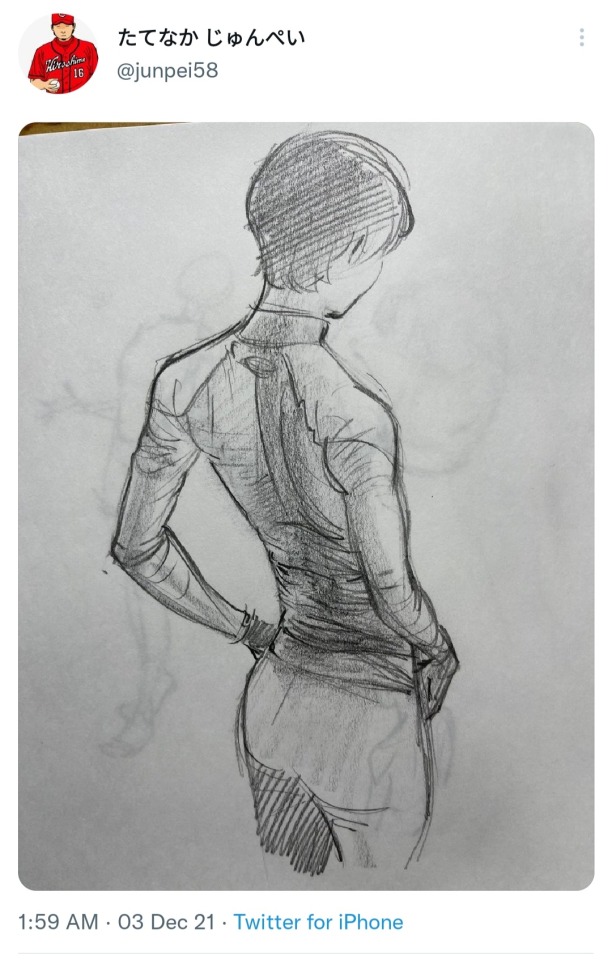


507 notes
·
View notes
Text
AnimeNEXT Announces Yuri!!! on Ice Staff as Guests
AnimeNEXT Announces Yuri!!! on Ice Staff as Guests
AnimeNEXT has announced that it will host animators Junpei Tatenaka and Noriko Itou, animation producer Takahiro Ogawa, and color designer Izumi Hirose at its upcoming convention. Tatenaka previously worked at Disney Animation Japan before working on anime, working on such films as Pooh’s Grand Adventure, Pocahontas 2, The Hunchback of Notre Dame II, and Mulan 2. He works as a freelance animation…
View On WordPress
0 notes
Photo

Key animation from Yuri Plisetsky GPF in Barcelona EX “Welcome to The Madness” by Tatenaka Junpei
#yuri!!! on ice#yoi#yuri plisetsky#yoiedit#fyyoi#*wttm#my gif#mine: yoi#yoi offical#i didn't see anyone make gifs of this#so i did#this whole thing would have been so cool in a gifset#with the completed thing and everything#but im just not a gifset person unfortunately#but if enough people ask me to#i might#or if someone wants to do it please do#1k
2K notes
·
View notes
Photo









Animestyle - issue 011, May 2017 Part 4(out of 5): key frames of Yurio’s EX (4 pages + some close-ups)
I’m including my own translation for the blurb in the first page (top right image) as well as the original text for reference.
Blu-ray&DVD最終巻である6巻に、完全新作映像としてユーリ・プリセツキーのエキシビション「Welcome to the Madness]が収録される。ここに 掲載したのはそのうちの1カットだ。第一原画を立中順平(たてなかじゅんぺい)が 修正を平松 祯史が担当。A1、A3からA13は平松によるレイアウト修正を原画として使用。A2は立中の第一原画がそのまま使われている。A14以降は他のアニメーターが第二原画を行った。
In the 6th and final volume of the Blu-ray&DVD, Yuri Plisetsky’s Exhibition “Welcome to the Madness” is compiled as completely new footage. Published here is a cut from that. Tatenaka Junpei was responsible for primary key frames*, and Hiramatsu for corrections. A1, and A3 through A13, are layout corrections by Hiramatsu used as key frames. A2 is Tatenaka’s primary key frame that was able to be used as-is. From A14 onward, another animator did secondary key frames.
_______ Notes: * 第一原画 (daiichi genga) and 第二原画 (daini genga) refer to the first and second key frames. I translated them as “primary” and “secondary” to express the idea of tiers. Some studios are able to have multiple people refine the key frames before submitting them to the animation supervisor (in this case Hiramatsu-san) who would check them, add corrections, and then send the cut out for in-betweens. The first key frame animators do the actual drawing, and the second key frame animators will clean it up - acting like assistants to the first key frame animators. _______________ Find links to all parts under the “keep reading” as I continue to post them.
Part 1: Cover, promotional/event images, character facial expression sketches (Yuuri, Victor, and Yurio) Part 2: key frames of Yuuri’s ep1 Stammi Vicino Part 3: key frame comparison with finished anime frame Part 5: key frames of Minako and Yuuko, Minami’s FS, and J.J.’s SP
#yuri on ice#yoi#animestyle#welcome to the madness#yuri plisetsky#my pictures#my translation#magazines#yuri!!! on ice
274 notes
·
View notes
Photo

Exclusive YOI illustration by Noriko Itou and Junpei Tatenaka for AnimeNext - very colourful! Source: @ AnimeNEXT
#yuri on ice#yoi official art#fyeahyurionice#fyeahyoi#victor nikiforov#yuuri katsuki#yuri plisetsky#noriko itou#animenext
71 notes
·
View notes
Text
Today’s translation #862
Animage 2017/2, Tatenaka Junpei x Abiko Eiji interview (Figure Skating animation)
Part 1.
-- You both are in the credits as 'Figure Skating animators', but how much have you drawn, specifically?
Tatenaka: Speaking about how much we have drawn.... it was a lot (laugh). It wasn't so much 'draw this and this, please', but 'until this deadline, please, draw as much as you can'.
Abiko: As much as we can, so really a lot, a lot.
-- Did you directly draw key animation frames?
Abiko: Not really key animation frames, but it was more a layout. Our job was to create the 'movements', which would become the base for key animation frames.
Tatenaka: After we created the draft of the movement and how the camera should move in a scene, as a part of this 'layout', we moved on to the next scene. The rest of work, we basically left to the key animators and animation directors, to do it as they please.
Abiko: However, sometimes those scenes came back to us later, like: 'We don't have time to draw key animation frames for these, so please, draw key animation frames, too.'
[Notes: New Year!! I hope 2025 is a good year for everyone! 💜💜
This year, 138 translations left to 1000~!
My New Year resolution is to create a proper YoI library on wordpress for easy access and clean the tags🫡✨]
21 notes
·
View notes
Photo

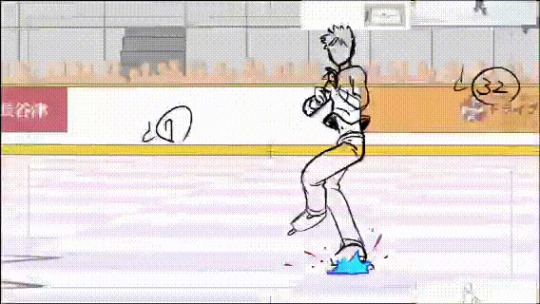


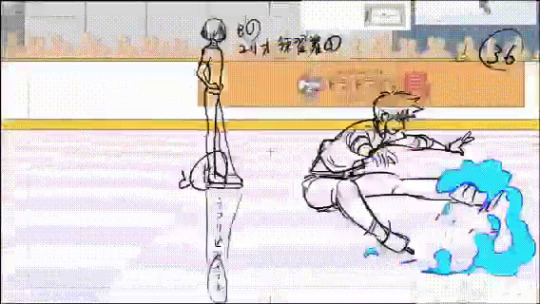

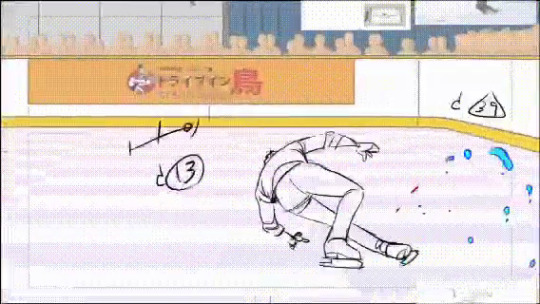


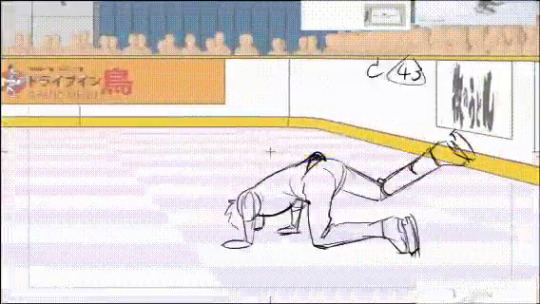
MAPPA’s Yuri!!! On Ice (ユーリ!!! on Ice), animation by Junpei Tatenaka

#yuri!!! on ice#fall#crash#mappa#yuri on ice#2d animation#character animation#rough animation#ruf animation#ruf#pencil test#ice skate#tatenaka junpei#junpei tatenaka
6K notes
·
View notes
Photo

Sketch of Agape Yurio by Yuri!!! on Ice animator Tatenaka Junpei. (x)
#official#yurio#yuri plisetsky#sketch#illustration#artwork#animator#agameoftones#yuri!!! on ice#yuri on ice#yuuri on ice#yuuri!!! on ice#yoi#drawing#tatenaka junpei#ice skating#anime#storyboard
418 notes
·
View notes
Text
Yuri on Ice interview translation - CREA 2017/03 (p34-35)
Second part of the YOI interviews featured on CREA. As for the one with Kubo, more than “interviews” they are like “mini articles” that incorporate what the interviewed people said. The interviews are with Kenji Miyamoto (choreographer), Eiji Abiko & Junpei Tatenaka (figure skating animators), Yuuko Sagiri (original costume designer), Keisuke Tominaga (music producer).
Random note: thanks to this magazine I was finally able to know that Sagiri’s name is “Yuuko”. When I translated her interview on Pash I did lots of research but wasn’t able to find out the pronunciation so I used Yuiko because that was what came out searching for the name alone, but now it’s confirmed that it’s Yuuko so as soon as I have time I’ll edit that interview to fix it. I swear all magazines should be obliged to provide the pronunciation of names, because sometimes it’s really hard to find out how the kanji are pronounced when it’s not famous people with Wikipedia pages and such...
By the way, the issue of Pash coming out today (Feb. 10th) has an article I was really looking forward to (the second part of Kubo’s detailed commentary on each episode), so I’ll probably spend the night translating it when I get home from work. Also because I want to post it before the YOI all night event on Saturday (I’m going to the live viewing).
***If you wish to share this translation please do it by reblogging or posting a link to it***
***Re-translating into other languages is ok but please mention that this post is the source***
The reality as expressed by 5 people who created “Yuri on Ice”
Reality #2: Choreography x Kenji Miyamoto “The footage taken with the camcorder was the key to create realistic and powerful anime scenes”
Profile: From Hyogo prefecture. After retiring from competitive ice dance in 2006 he started working as a choreographer and commentator. With director Sayo Yamamoto’s “ENDLESS NIGHT” for the first time he was involved in creating figure skating choreographies for an anime.
The choreographies for all characters’ programs were created by choreographer Kenji Miyamoto. He created them integrating the music with the information he received from director Yamamoto and Kubo regarding the characters and their programs. What was different than usual is that the songs for the FS were 4 minutes long instead of 4:30 minutes. “In the anime characters need less strokes to speed up, so it’s possible to use less ‘transitions’, the movements connecting different techniques. I cut down on those and made the programs more compact.” Miyamoto was filmed with 4 fixed cameras and 2 portable camcorders as he danced all the programs, then the footage was edited into a multiframe video based on which the animated figure skating scenes were created. “I believe that the footage taken with the portable camcorder, that filmed me up close, is what made it possible to create realistic and powerful tournament scenes.” After watching the finished anime, Miyamoto commented that the characters’ monologues during their performances are realistic. “When you are performing lots of things are whirling around inside your head. In my case it wasn’t words but still pictures, like photographs. I was happy that they expressed the athletes’ feelings.”
Reality #3: Animation x Junpei Tatenaka & Eiji Abiko “The performances look realistic thanks to Miyamoto-sensei’s choreographies”
Profile: Animators working for the anime production company MAPPA. Specialized in sports and action scenes. They both created animation for director Sayo Yamamoto’s “ENDLESS NIGHT”.
Animation of the figure skating scenes was created by action specialists Junpei Tatenaka and Eiji Abiko. “It’s the first time that we digitally create 2D pictures after deciding the camerawork. It was very difficult because we had to figure out how to do everything”. Tatenaka, who was already a fan of figure skating, says: “For the moments I believed to be the ‘highlights’ of a performance I would add 1-2 extra stills. This way, I was able to draw out a little what in the live footage only lasted an instant.” They actually made jumps much higher than they are in real life. “While being aware that real skaters wouldn’t jump that high, I still wanted the scenes to be striking, therefore I was always looking for a good balance between realism and what could be allowed in animation.” (Abiko) They both agree that Miyamoto’s choreography footage was the most important factor that allowed them to create realistic performance scenes. “When there was a key point in the music, Miyamoto-sensei would pose with all of his body creating a beautiful line, from his fingertips to the tips of his toes. It was very easy to draw.” (Tatenaka)
Reality #4: Costumes x Yuuko Sagiri “I think the only difference is that there were no budget restrictions (LOL)”
Profile: Ballroom dancing costume designer working for the ballet & dance supplies maker Chacott. She has designed figure skating costumes for athletes such as Nobunari Oda and Akiko Suzuki.
Yuuko Sagiri, designer of the athletes’ costumes, created the designs giving importance to functionality that would improve a skater’s performance and to elements that would make the character’s personality stand out, just like she does for real costumes. She chose materials, cuttings and decorations that would actually be employed in costumes used for real performances. “Normally I objectively watch an athlete’s past performances to understand their level and what kind of movements they are skilled at, and this is then reflected in the design. This time I based the design on the characters’ setting materials, the information I received from the director and the choreography footage by Miyamoto-sensei. I think the only difference is that there were no budget restrictions (LOL).” Regarding Yuuri’s costume, she mentions that she wanted to reflect the fact that he is psychologically weak and gains weight easily. “I added shining decorations on his chest so that his face would look bright even when he is tense. The cuts on the waist are to make him look slim.” Actually, she also designed a costume for Yurio’s exhibition. Sagiri said that she created the design thinking of what “Yurio would really want to wear”. We’d definitely like to see him skate with that costume!
Reality #5: Music x Keisuke Tominaga “I added melody to the beautiful lyrics that is ‘Yuri on Ice’”
Profile: From Kanagawa prefecture. Music producer. He founded PIANO INC. in 2012 and is the current representative director. His main works include the Pocari Sweat 2016 commercial “Kimi no Yume wa, Boku no Yume.”, the TV anime “Zankyou no Terror”, etc.
When creating the music for this show, music producer Keisuke Tominaga constantly asked himself whether it was music you could dance to. “I would move my hands, feet, my whole body, sometimes even checking the rhythm like a conductor or a dancer. Figure skating has many elements that resemble ballet, so to express the elegant movements of the body I used many tunes in triple time like waltz and bolero.” Most of the classical and orchestra tracks were created by Taku Matsushiba, while the vocal tracks and modern band songs by Tarou Umebayashi. They worked on the music as a team, always communicating with each other. “The world created by Kubo-san and director Yamamoto was like realistic and beautiful ‘lyrics’, and I feel that our role was to create a ‘melody’ for those lyrics. In fact, when I joined together Yuuri’s FS song “Yuri on ICE” and Victor’s recorded voice for the first time, the lines sounded just like the words of a song, and I can’t describe how moved I was. I believe that this strong, deep expression that you would not be able to obtain with music alone is what realistically affects the viewers.”
Bonus in case you haven’t seen it already: Sagiri’s design for Yurio’s exhibition program.

#YOI#Yuri on ice#interview#translation#crea#Kenji Miyamoto#Junpei Tatenaka#Eiji Abiko#Yuuko Sagiri#Keisuke Tominaga
1K notes
·
View notes
Text
I'm at animenext2017 and some of the members of studio MAPPA are here. Someone asked if there was a specific reason why the openings changed throughout episodes and Junpei Tatenaka (lead figure skating animator) said something along the lines of "we thought we finished the opening the first time, but director Yamamoto is the type of person who won't stop changing things until its perfect."
2 notes
·
View notes
Text
Make History With A "Yuri!!! On Ice" Celebration Of Yuri Plisetsky's Birthday
Get ready for Yurio day! March 1st is the birthday on Yuri!!! on Ice's Yuri Plisetsky and the anime's site has marked the ocassion with a set of icons, headers and other social media accouterments. Series creators and staff have also joined fans in sharing tributes.
HAPPY BIRTHDAY本日はユリオの誕生日!!! バースデー待受&アイコンプレゼント+抽選で応援バナーもプレゼント様からのお祝いメッセージ、お待ちしております!!! https://t.co/207VZFvzjq#yurionice #ユリオ誕生日 http://pic.twitter.com/UW2mh5JKAd
— TVアニメ「ユーリ!!! on ICE」 (@yurionice_PR) February 28, 2017
間もなく3月1日(水)のユリオの誕生日を記念して、プレゼントキャンペーンを開始しました バースデー待受&アイコンプレゼントに加え、抽選で応援バナーもプレゼントです♪ https://t.co/207VZFvzjq#yurionice #ユリオ誕生日 http://pic.twitter.com/xq7ahWRmZe
— TVアニメ「ユーリ!!! on ICE」 (@yurionice_PR) February 27, 2017
From concept creator/original character designer Mitsurou Kubo
2016年の正月に描いて眠らせてた絵を。あの頃は誰も知らなかった彼も、今はたくさんの方に祝われることになりました。本当にありがとうございます!生まれてくれてありがと〜ユリオさんことプリセツキーさん http://pic.twitter.com/IyBU5v9DGr
— 久保ミツロウ (@kubo_3260) February 28, 2017
From animator Noriko Itou
ユーラチカ is 天使!! ユーリ・プリセツキーくん16歳のお誕生日おめでとうございます 誕生日早々ダメな大人に振り回されるユリオの受難…#ユリオ誕生日 #ユーリプリセツキー生誕祭2017 #yurionice http://pic.twitter.com/AZ5Pn2Oear
— 伊藤憲子 (@nrkito) February 28, 2017
From animator Junpei Tatenaka
はい、おめでとー☆#yurionice #ユーリプリセツキー生誕祭2017 http://pic.twitter.com/gGmiSJxBqw
— じゅんぺい たてなか (@junpei58) February 28, 2017
はい、メイキングです~。#ユーリプリセツキー生誕祭2017 #yurionice http://pic.twitter.com/2MzmtVW7w0
— じゅんぺい たてなか (@junpei58) March 1, 2017
ユリオお誕生日おめでとう~!! #ユーリプリセツキー生誕祭2017 http://pic.twitter.com/a1AmQblkjP
— わたわた (@wtaawata) March 1, 2017
Happy birthday Yuri!!!⭐️ #ユーリプリセツキー生誕祭2017 http://pic.twitter.com/K23Ow9RHhS
— Дeман/Дeмасик❄️ (@barimor_d) February 28, 2017
the next living legend of russia!!! the ice tiger from moscow!! YURI PLISETSKY WAS BORN TO MAKE HISTORY ON THIS DAY!!!!!#ユーリプリセツキー生誕祭2017 http://pic.twitter.com/5K2vkVcwyI
— ジ��ちゃんさんon ice (@denkimouse) February 28, 2017
ユーリ、お誕生日おめでとう! #ユーリプリセツキー生誕祭2017 http://pic.twitter.com/z37ccClm5l
— モノ (@monoyoi) February 28, 2017
#ユーリプリセツキー生誕祭2017 おめでとう! http://pic.twitter.com/5S1spmZPgQ
— JIL-東3 ア58b (@juqovanni0301) February 28, 2017
おめでと!ユリオ〜〜#ユーリプリセツキー生誕祭2017 http://pic.twitter.com/IWkDPULHNp
— 尻川 (@VIC_hip_so_cute) March 1, 2017
みんなに愛されるユリオちゃんはきっとあたたかい家族に囲まれて16回目の産声をあげるのね…#ユーリプリセツキー生誕祭2017 http://pic.twitter.com/dgz7i40dP5
— あまい⛸❄️ (@am_am_am___) February 28, 2017
【ユーリ!!onIceユリオへアースタイル作ってみた】 何話目かで髪の長さが全然違くて戸惑いました笑 ヘアカラーはハイブリーチに紫シャンプーだけですがかなり綺麗なブロンドに仕上がりました^^#ユーリオンアイス#ユーリプリセツキー生誕祭2017 #ユリオ好きな人はRT http://pic.twitter.com/taCreatmlG
— 美容師井上佳祐/アニメの髪型 (@pecoHASEO) February 16, 2017
------- Scott Green is editor and reporter for anime and manga at geek entertainment site Ain't It Cool News. Follow him on Twitter at @aicnanime
0 notes
Photo

and here’s another piece signed by yoi mappa staff ♥ vitya on left was drawn by junpei tatenaka and the trio by noriko ito (x)
#yuri!!! on ice#junpei tatenaka#noriko ito#yuuri katsuki#victor nikiforov#victuuri#yuri plisetsky#the podium family#official art#♥
725 notes
·
View notes